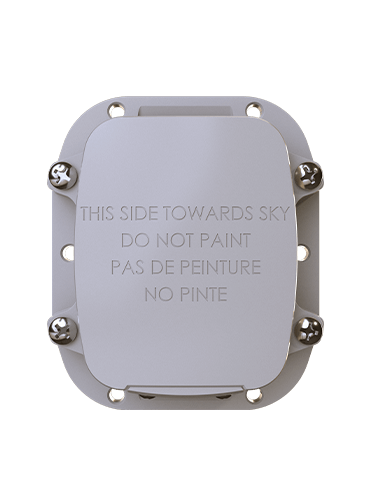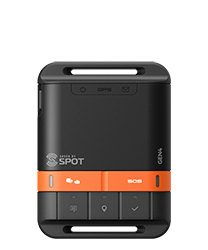The Value of Two-Way Satellite Communications
Uninterrupted connectivity is becoming paramount for reliable communications. The shift from one-way to two-way satellite communications marks a move to resilient, far-reaching connectivity. From emergency response and maritime operations to industrial monitoring and defense, this bidirectional capability empowers users to not only receive information but to send critical updates, commands, and alerts. As organizations expand into increasingly disconnected geographies, the ability to maintain a responsive link through the sky is no longer optional; it’s essential.
The Shift to Two-Way Technology Opportunity
The growing need for real-time insight, control, and responsiveness is accelerating the use of two-way satellite communications. Demand meets advancements in satellite technology, making two-way communication more scalable, secure, and accessible than ever before.
Demand
IoT connectivity is growing in complexity, as is the need for resilient communications worldwide. Transmitting data is transforming into action-driven data communications, which is where bidirectional messaging in satellite connectivity is burgeoning. IoT is iterating in a way where, for example, gathering data points on soil conditions is massively helpful, but the next iteration is an irrigation device receiving back information that the soil is too dry and, therefore, signals the device to begin irrigating. The need for real-time data and remote control is driving advancement in IoT connectivity technologies to respond to these requirements. Low Earth Orbit (LEO) satellites are helping answer that call.
Technology Opportunity
- Advancements in Satellite Technology: The development of LEO satellites has drastically reduced the cost and size of satellite systems, making it much more feasible to use in widespread, lower-complexity applications – ideal for IoT.
- Low Power, More Efficiency: Advancements in power-efficient hardware and protocols, such as low-power wide area (LPWA) networks and newer satellite IoT protocols, have made it possible for IoT devices to engage in two-way communication without draining excessive power. One powerful example of this is the Non-Terrestrial Network (NTN) NB-IoT, which is an LPWA cellular network delivered through satellite, creating an exciting opportunity to see terrestrial and non-terrestrial merge.
The Benefits of Two-Way Satellite Communications
Satellite companies are shifting and adapting to meet the needs of real-time IoT communications across the globe by offering two-way communication services. Evaluating whether an organization should transition from one-way to two-way communication involves assessing whether it is worthwhile to adopt a new technology model and whether it aligns with the specific use cases at hand. Essentially, it consists of increasing the functionality of an existing use case by enhancing capabilities or deploying a next-generation solution, depending on where organizations are utilizing IoT.
Overall, the ability to send and receive messages through two-way satellite communication offers a host of benefits for IoT applications:
Real-Time Monitoring
Two-way satellite communication allows IoT devices to not only send sensor data but also receive control commands. This is particularly useful in scenarios where immediate action or adjustments are needed. For example, in logistics, satellite-enabled tracking devices can provide location data for shipments and receive updated route instructions or emergency alerts. This allows for instant decision-making because organizations can respond to critical situations without delay. An example would be in oil and gas; if equipment failure or environmental changes demand immediate action, two-way communication can trigger real-time actions, such as shutting down machinery or alerting employees in real-time.
Reduced Operational Costs
Two-way communication allows for remote diagnostics of IoT devices, which reduces the need for site visits. This is particularly useful in remote or hard-to-access areas. Not only does this reduce the cost of on-site visits, but it also can reduce downtime if a device is experiencing issues. For example, if a fleet vehicle with IoT sensors can send data about its performance, troubleshooting is much easier to do from a distance, and predictive decisions can be made before downtime even occurs.
Flexibility & Coverage
Two-way communication is essential in mobile IoT devices. In environments where devices are constantly in motion, such as shipping containers, trucks, or satellite-connected drones, the ability to both send and receive data enables continuous communication and control. This can also extend critical IoT communications worldwide. A significant portion of the Earth is not covered by cellular service, which can leave considerable coverage gaps for moving devices or solutions in remote locations.
Improved Security and Risk Management
Security can be enhanced through two-way messaging by allowing instant alerts when something goes wrong and the ability to address issues remotely. This can be critical in environments where human intervention is limited or access is difficult. For example, wildfires. IoT devices in remote portions of forests can send early warning signals when a fire outbreak occurs and then receive instructions to initiate automated countermeasures, such as activating a fire suppression system. Additionally, remote locking, control, or disablement can be supported through two-way messaging. This is particularly pertinent for devices that might be exposed to tampering or theft. If devices are locked, stolen or compromised, the device can essentially shut itself down so that it cannot be used. This is helpful in instances such as supply chain management, where high-value goods can be tracked and controlled remotely. If a GPS tracker on a high-value shipment is stolen, the system can send a “disable” command to prevent it from being tampered with or accessed.
Enhanced Data Processing and Analytics
IoT devices that utilize two-way communication are often capable of handling edge processing, which involves performing data analysis at the device level. Adaptive systems can also be supported through two-way communication. In adaptive systems, IoT devices can adjust their behavior in response to external conditions and real-time data, creating a more responsive environment that enhances efficiency and productivity. An example of this can be found in smart grids, where IoT-enabled smart meters and grid devices can adjust their operations based on feedback from the central system and, in return, send their status back for grid optimization, ensuring the efficient distribution of power based on current needs.
Scalability and Future Proofing
Two-way communications allow for more dynamic and scalable IoT systems. As devices and networks grow, the ability to interact with each device and control them remotely means the system can expand more efficiently without the need for major manual interventions. For example, in logistics, two-way communications can support connectivity in a ship from port to sea with a handoff, so no connectivity is lost. A port where a ship could continue its connected path from the port out into the ocean without interruption for critical communications. Two-way communication also lays the groundwork for future innovations in IoT. IoT technology will continue to advance, and the need for more autonomous applications will emerge. Two-way communication can enable the development of new use cases, including machine-to-machine automation and autonomous vehicles, among others. Take, for example, autonomous vehicles: two-way satellite communication will enable vehicles to send operational data to control centers and receive real-time updates on traffic, weather, and safety conditions. These future applications of IoT are a lot closer than they look when it comes to widespread adoption, so preparing with two-way communication enables a pipeline into simplified scalability.
Access Details on Two-Way Communications
One-way and two-way satellite communications support a host of IoT use cases on a global scale with reliability and accessibility. Whether using it as a standalone function or in conjunction with one-way communications, this robust connectivity solution can serve multi-faceted purposes.
Get more insight on how to achieve two-way communications seamlessly and with interoperability into existing or developing systems and solutions. Reach out to our team of experts to learn more.
 SmartOne Solar
SmartOne Solar SmartOne C
SmartOne C STX3
STX3 SPOT X
SPOT X SPOT Gen4
SPOT Gen4 SPOT Trace
SPOT Trace